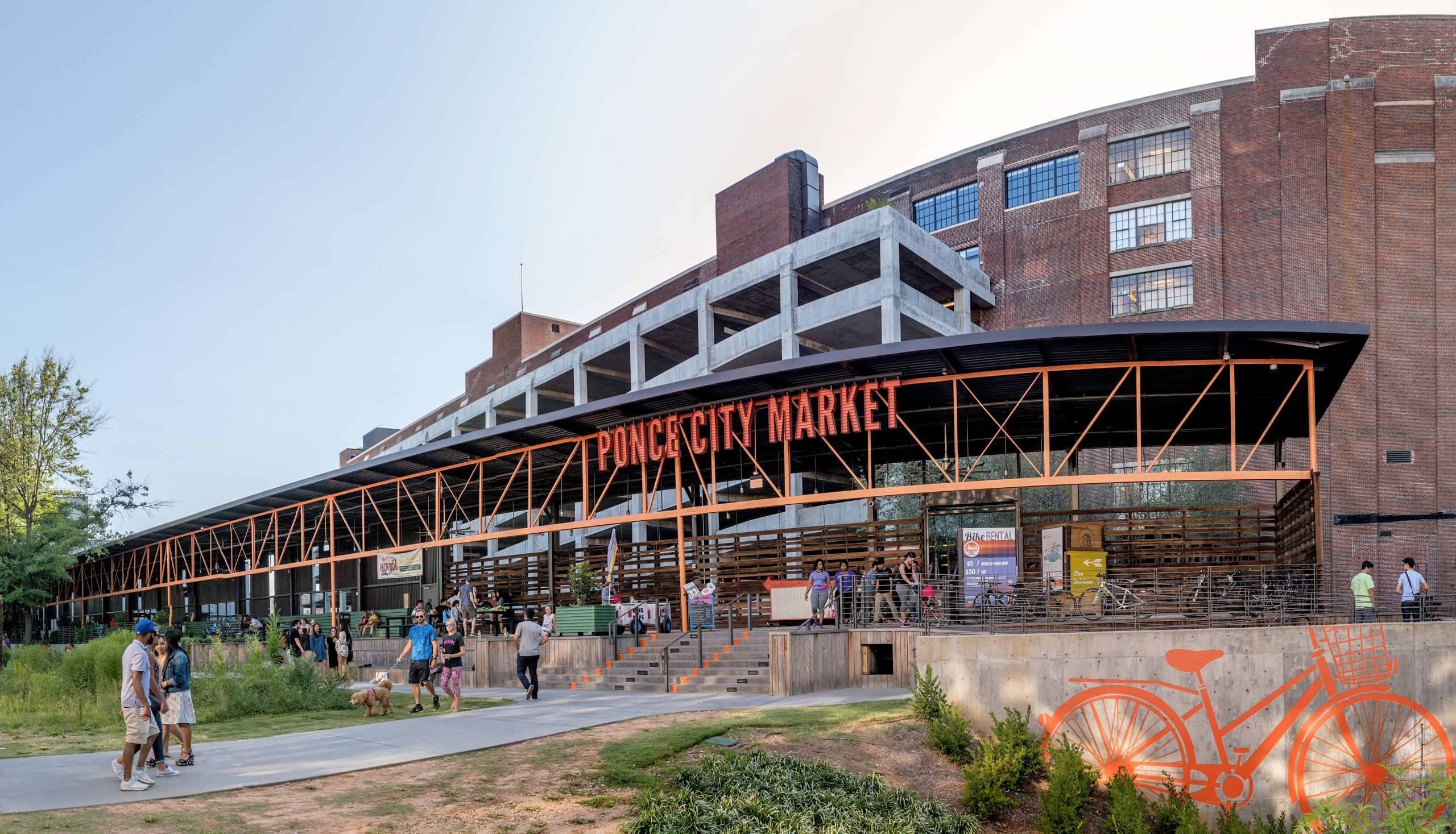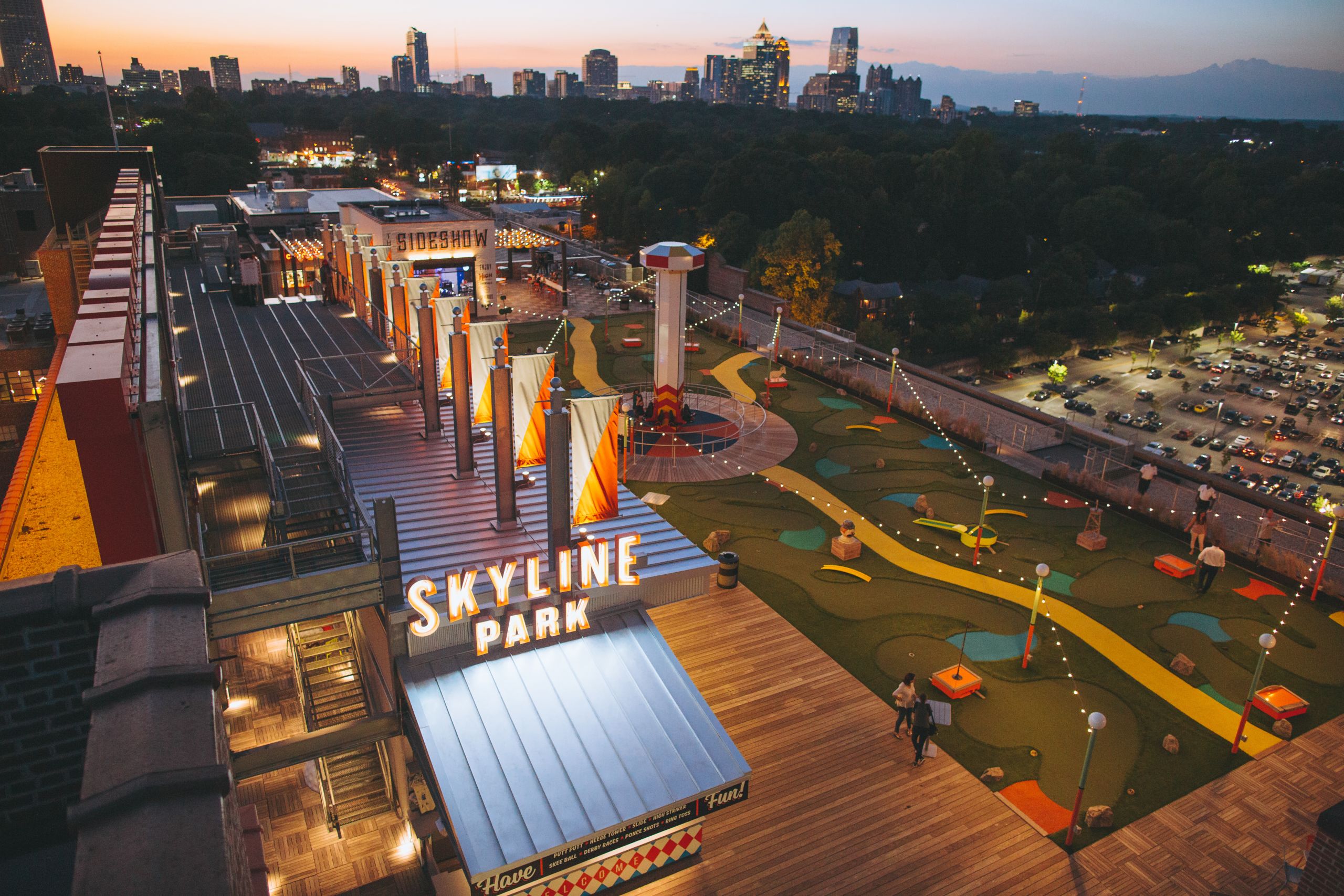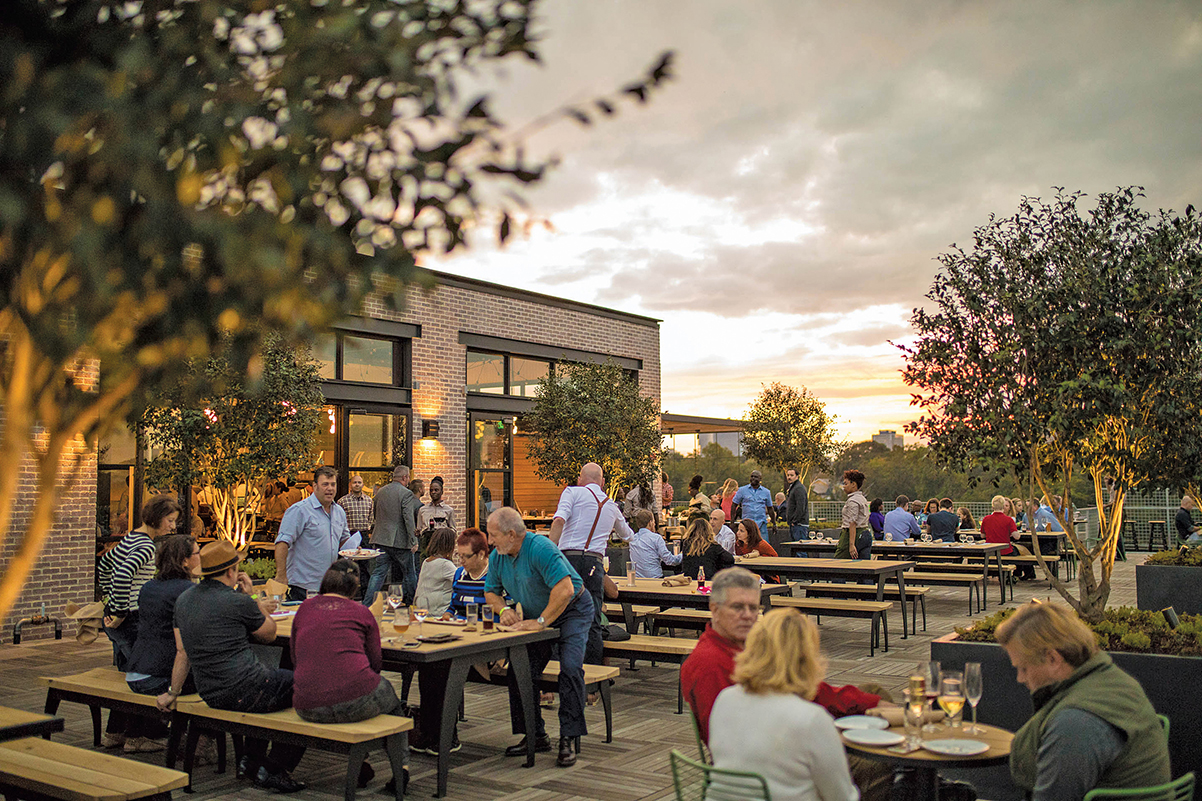6 Things You Didn’t Know About Ponce City Market
Published February 17, 2023
Last Updated May 30, 2023
*Artículo disponible en español.

The retail, dining and residential complex we know as Ponce City Market opened in 2014 in the old Sears, Roebuck & Co. building in Atlanta’s Old Fourth Ward. The building dates back to 1926. Sears used it as both a retail store and regional headquarters, bringing in thousands of jobs before moving out in 1979.
The building was home to City Hall East in the 1990s before it was purchased by developer Jamestown. Connected to both the Old Fourth Ward and the Atlanta BeltLine, this building – encompassing more than 2 million square feet – was renovated, bringing in big-name retailers, food hall outposts by nationally renowned chefs, and office and apartment spaces.
Read on for fascinating tidbits of Ponce City Market’s history.
Ponce de Leon Connection
Ponce City Market takes its name from Ponce de Leon Springs, a popular day-trip destination for suburbanites in the 1860s. A local doctor named the springs after Ponce de Leon to create the association between these springs and the explorer’s quest for the Fountain of Youth. Ponce de Leon Avenue, which runs alongside the building, was named for the springs and the man. But, no, he never came to Atlanta.
The ROOF at Ponce City Market – Skyline Park

In addition to the springs, Ponce de Leon amusement park was created in the 1880s. It expanded in 1903 with rides for kids, a dance hall, a theater and picnic tables. A baseball park was later added. But sadly, this space was segregated, open only to whites and their servants. It closed in 1924 to make way for the Sears Roebuck building. But whimsical games and rides reminiscent of the old park were incorporated into Skyline Park, Ponce City Market’s rooftop amusement park. Sears and its mail-order business was a boon to Black citizens who couldn’t shop at retailers like Sears during segregation but who could buy via mail order like anybody else, according to The Bitter Southerner. The Black community further benefited from the arrival of Sears and its former president, Julius Rosenwald, who worked with Booker T. Washington and also used the Sears’ empire to fund and establish schools for rural Black children, reports The Bitter Southerner, which notes that the Rosenwald Schools, as they were called, enabled more than 600,000 Black students to attend school from 1915 to 1932. Following Rosenwald’s death, scholarships were awarded in his name to W.E.B. duBois, Ralph Ellison and Zora Neale Hurston.
Spiller Park
In addition to the amusement park, in 1907 a 4-acre lake was filled in to create Ponce de Leon Ballpark, commonly known as both The Poncey and Spiller Park, a nod to the businessman, R.J. Spiller, who paid for the construction of the ballpark. It was here that Atlanta’s minor-league baseball teams, the Atlanta Crackers and the Atlanta Black Crackers, played from 1907 to 1964. Babe Ruth and Eddie Matthews both hit home runs at the park. In 1949, the Brooklyn Dodgers came to Atlanta to play the Atlanta Crackers. That match-up brought Jackie Robinson and Roy Campanella to the A, and they became the first two Black players to face an all-white team in Atlanta, reports The Bitter Southerner. While the space is now the Midtown Place strip mall, you can still see the outline of the field from The Roof at Ponce City Market, as well as the magnolia tree that once graced the outfield of the ballpark. The ballpark was demolished in 1965, but Atlanta chef Hugh Acheson kept history alive by naming his coffee shop in Ponce City Market, Spiller Park Coffee.
Nine Mile Station

Before cars were common, the Ponce de Leon line of the horse-drawn Atlanta Street Railway – 10 cents per ride – was extended to Ponce de Leon Springs in 1874. The line started around Marietta and Broad streets before continuing up Ponce de Leon Avenue. It also took visitors to the Cotton States and International Exposition in Piedmont Park. When a streetcar replaced the horse-drawn carriages, Nine Mile Circle was the name of the station in front of the building. Today, Nine Mile Station is the name of the modern beer garden on The Roof at Ponce City Market.
RFD Social
From 1926 to 1928, the “Dinner Bell RFD,” named for the Radio Farmers’ Democracy radio show, was broadcast from the Sears building’s tower. Airing on WSB radio three times per week, the show featured old-time musicians and string bands similar to contemporaries like the Louisiana Hayride and the Grand Ole Opry. Operated by the Agricultural Foundation, it encouraged farmers to shop at Sears. Today, relics from the broadcasting past can be seen at RFD Social, another one of Ponce City Market’s rooftop eateries. Also inside the restaurant are tabletop shuffleboard, poker tables and a speakeasy.
Farmers Market
Sears held a farmers market on the property from 1930 to 1947, showcasing items grown by the store’s most loyal customers. When Ponce City Market opened, it continued this legacy with the Ponce City Farmers Market, held seasonally on Wednesdays under The Shed on the BeltLine. The producer-only market also hosts urban farmers, artisanal food makers and pop-up chefs.
Learn more about Ponce City Market with our guide and about Atlanta’s history with the History and Heritage Itinerary.
Discover More
Get to know Atlanta, and discover the best things to do around the city.